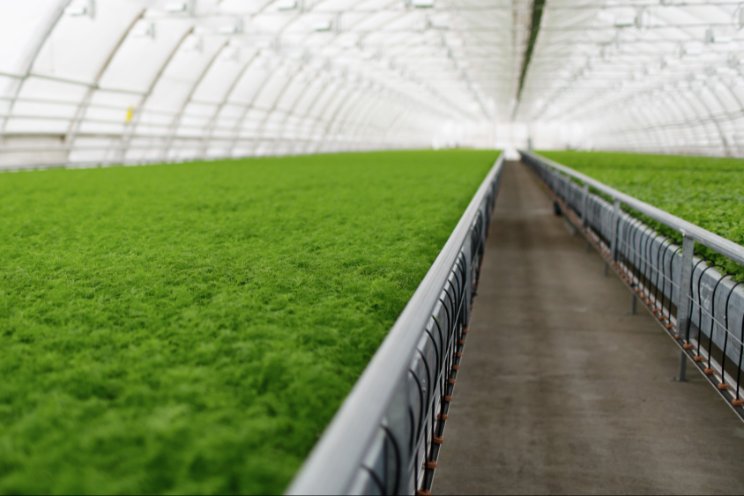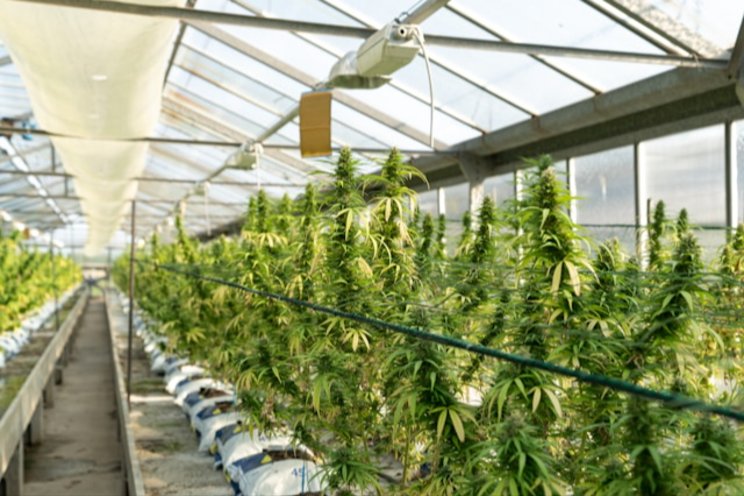10 tips for closing down a greenhouse for the winter
Added on 07 September 2020

It's a tough reality to face after a long period of upheaval: the economic effect of the COVID-19 virus may unfortunately force you to shutter some greenhouses this winter.
The impact of severe weather and the prolonged exposure to the elements can cause significant damage to a closed greenhouse, most of which are designed by code to maintain a 50° F minimum temperature.
Here are some pointers to help minimize damage to the structure and equipment:

Covering shutters and vents will reduce infiltration and keep the wind out
- Visually inspect the exterior of the greenhouse to see that it will keep the snow and rain out. Replace cracked or broken glass. Tape tears and seal leaks in the poly cover. Check to see that the plastic is attached securely and that any holes are taped. On air inflated greenhouses, increase the inflation pressure slightly when snow or strong winds are predicted by opening the blower's intake valve. This will reduce the rippling effect. Weatherstrip and fasten doors so they can't be opened by the wind.
- To support wind and snow loads, check that the frame is secure. Tighten truss connections, frame bolts, straps and bracing. In heavy snow country, add a row of wood 2 x 4's under the ridge on hoophouses to support heavy wet snow that would normally melt and slide off when the house is heated.
- Decide whether to provide minimum heat or shut the heating system down. If you have a boiler system, it may be better to keep the heat on and set the thermostat at 35° F. This eliminates the need for draining the system and blowing out the pipes. It may also prevent seals, gaskets and valves from drying out. A plastic shelter over propane and fuel oil tanks can provide protection, or adding methanol to oil will keep the fuel more viscous. For hot air furnaces typically used in hoophouses, they can be shut down without problems. Turn off the oil supply valve.
- Check vents and shutters, ensuring they are closed tight. Inspect roof vents and roll-up sidewalls for leaks or gaps that would allow wind and snow to enter. Fan shutters should be covered with a sheet of plastic or insulation board. Cover evaporative cooling pads and drain tanks, piping and valves.
- In southern climates, a closed greenhouse may overheat on a bright, sunny winter day. This may be fine for reducing insects and diseases, but it can also damage plastic piping, deteriorate shade material or warp plastic benches. Vents or fans may have to be operated on these days.
- Energy/shade screens should be open. The sun will warm the greenhouse and soil on clear days and keep the frost penetration to a minimum. It will also provide protection to the screen material to reduce deterioration. If you are running heat then close the screen (unless snow is predicted).
- Electric power and controls may still be needed when the greenhouse is buttoned up. The power and smoke/fire alarms should be checked frequently to insure they are working. Heat may be needed to melt and remove a heavy snow load.
- Remove pesticides, fertilizer and other chemicals that could be affected by cold temperature. Check Safety Data Sheets (SDS) for storage requirements. Many chemicals have minimum/maximum storage temperatures and light exposure requirements.
- Provide rodent control. Mice, chipmunks and squirrels may enjoy the mild climate of a vacant greenhouse. Set traps and baits.
- Get ready for Spring. The winter is a good time to do needed maintenance. Remove all debris left from the previous crop, dispose of all used containers and powerwash benches. Pick a warm day during slack time to service and repair equipment. Check operation of heating and cooling equipment, calibrate controls, tighten up doors and vents and make needed structural repairs.
John is an agricultural engineer, an emeritus extension professor at the University of Connecticut and a regular contributor to Greenhouse Management. He is an author, consultant and certified technical service provider doing greenhouse energy audits for USDA grant programs in New England. jbartok@rcn.com
Source: Greenhouse Management
Photo: In snow country, a few well-positioned posts under the ridge will help to support a heavy snowload.
Photos courtesy of John W. Bartok Jr.
Source: Greenhouse Management
More news















